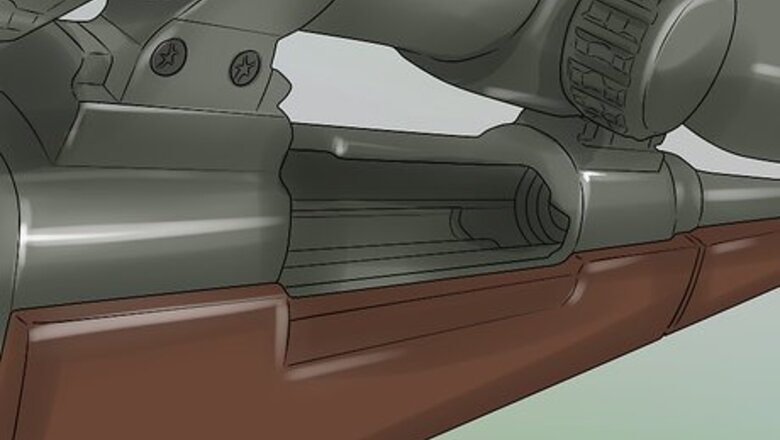
views
Cleaning the Rifle
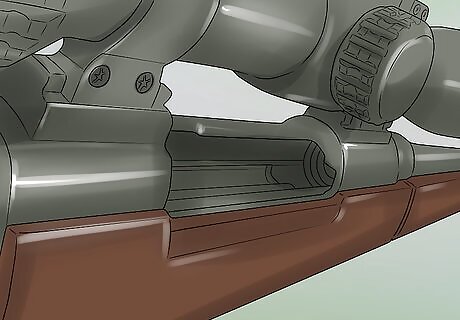
Check that the gun is unloaded. Always double-check to make sure that the gun is not loaded before starting to clean the rifle. Always practice good firearm safety and handling measures.
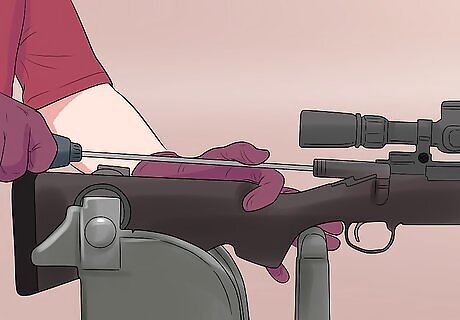
Clean the rifle thoroughly, including the barrel. Rifles that have been sitting in storage for a long time, or rifles that are frequently used for hunting, can become covered with dust and grime. A clean rifle will shoot more accurately than a dirty one. There is no set time when your gun should be cleaned, but the general consensus is to clean it after you are done firing for the day, and before and after you put the gun in storage.
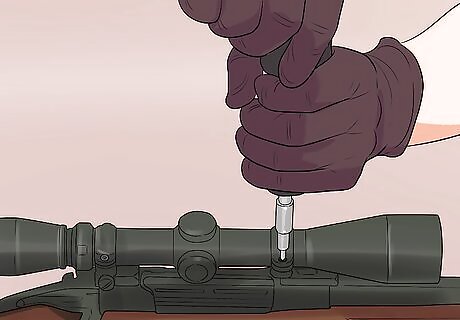
Tighten any loose screws on the sights and scope mounts. Like dirty rifles, loose screws can cause a rifle to fire inaccurately.
Setting Up a Rifle Rest
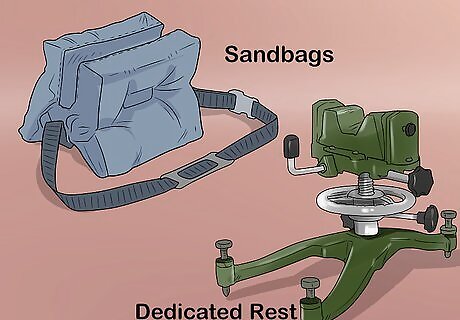
Decide between a dedicated rest or sandbags. The decision comes down to your budget and what you're comfortable working with. There are professionally made rests available for purchase that will secure your rifle, or you can use sandbags to create a firm rest. It is essential that the rifle does not move during the sighting process. Whichever rest method you use is fine as long as there is no movement. Depending on the rest you use, you may need to prop the front or the rear of the rifle with sandbags.
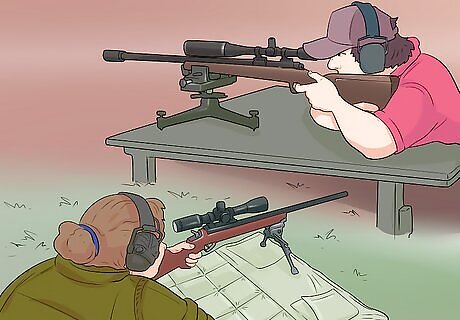
Determine where you want to set the rest up. Depending on the location that you're shooting, you may have access to different options. Comfort is not especially necessary since you won't be firing much from this position. If you are using a firing range, you may be able to use a bench at the facility. If you are shooting in the wild, you can either set a bench or table up yourself, or assemble the rest on the hood of a car. If you are prepared to lie down, you can set your rest up on the ground, provided that there is enough clearance to safely shoot.
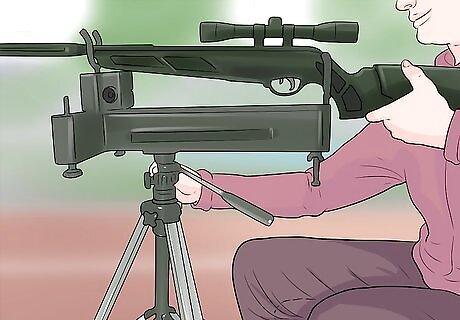
Place the rifle securely in the rest. If you are using a gun vise as a rest, make sure that it is fastened securely. Wedge the butt securely into sandbags and rest the stock on another. Make sure that the rifle is as stable and secure as possible. The only thing moving should be the trigger when you squeeze it.
Bore-Sighting the Rifle
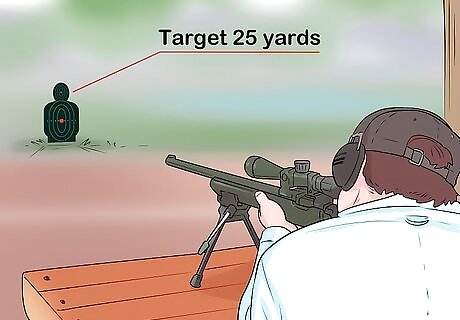
Set up a target with a bull's-eye at 25 yards (22.9 m). This technique alone will not accurately sight-in a rifle, but it may help get your rifle shooting much closer to the intended target than before. Most rifle sighting is done first at 25 yards (22.9 m), then at 100 yards (91.4 m). This will give you a more accurate sighting over long distances. A quick way to measure yardage is to grab a tape measure and see how many paces it take you to travel 30 feet (9.1 m). Do this a couple times and average the results. Once you know how many paces 30 feet (10 yards) is, you can measure out 25 yards (22.9 m).
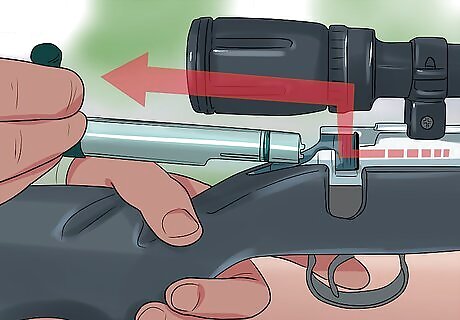
Remove the bolt from the rifle. The process for this varies from firearm to firearm, but almost all bolt-action hunting rifles should be able to do this relatively easily. Make sure to place the bolt somewhere clean while bore-sighting.
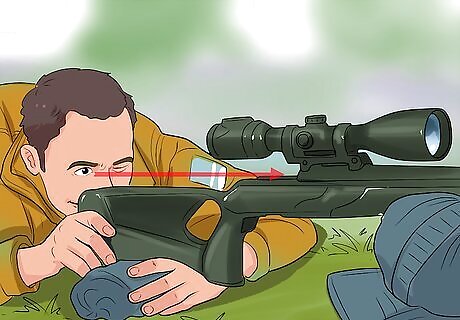
Look through the barrel at the bull's-eye. Move the rifle until the middle of the bull's-eye is lined up with the barrel. If you are not using a bolt-action rifle, you can insert a collimator, which is a bore-sighting instrument, into the end of the barrel to continue bore-sighting the rifle. Make absolutely sure to remove the collimator before firing your rifle.
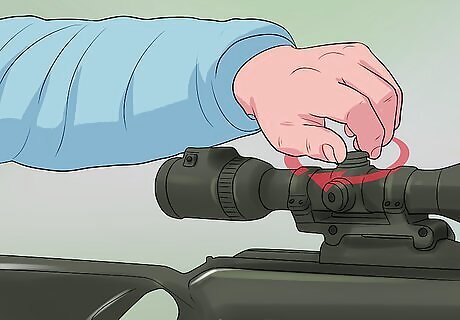
Adjust the scope. Check the scope to see if the crosshairs are also lined up with the bull's-eye. If they are not, adjust the settings on the scope in the opposite direction you want the scope to move, until the crosshairs go through the center of the bull's-eye. In other words, if you want the crosshairs to move up, you will have to turn the scope adjustment knob in the downward direction.
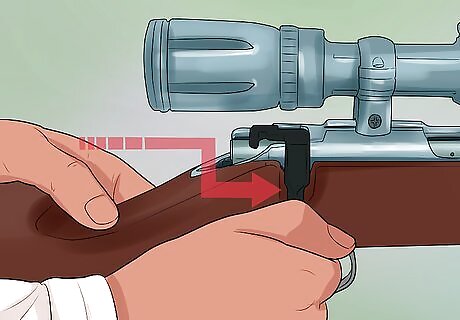
Reinsert the bolt. Once you have finished bore-sighting the rifle, return the bolt to its original position.
Sighting the Scope
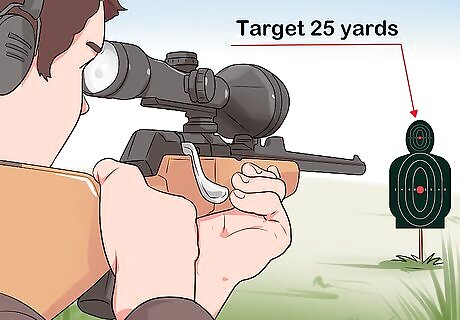
Find the target in the scope. Your target should still be 25 yards (22.9 m) out. Place the crosshairs directly on the center of the bull's-eye. It shouldn't require much adjustment from the bore-sighting section.
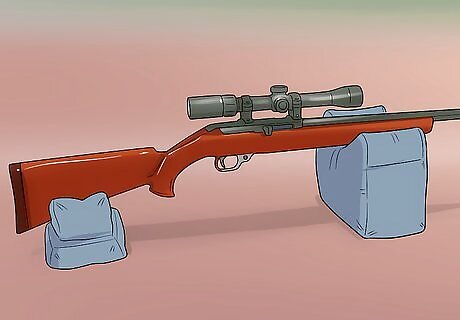
Check your rest again. Once you have the rifle aimed at the target, double-check your gun rest to make sure that it is secure and that the gun will not move when fired. Place extra sandbags around the butt if necessary.
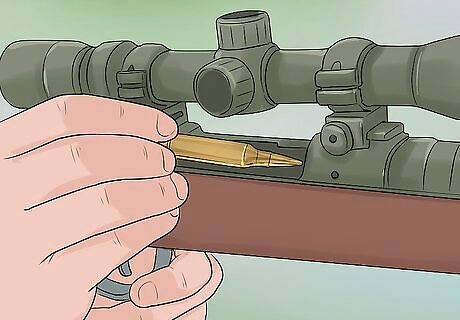
Load the rifle with the ammunition you intend to shoot with. Different bullets have different weights, so it may shoot inaccurately if you change ammunition after sighting-in the rifle. When you are sighting in a rifle, you are essentially sighting it for one specific type of ammunition. Put the cartridge in gently, so that you don't disrupt the positioning of the rifle.
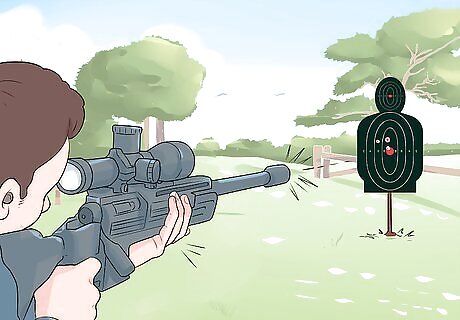
Fire your first shots. Fire a group of 3 shots at the bull's-eye, taking care to stay in the same position for each shot. Try to fire when there is little to no wind, so that your shot will not be affected. Always follow strict safety guidelines when handling a live firearm. Never shoot when someone is downrange, and never point a loaded gun at another person.
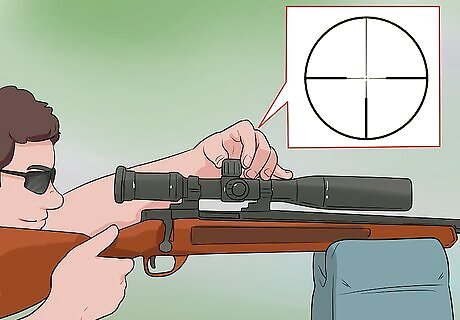
Find the center of the group. Measure how far away the center spot is from the bull's-eye. Adjust the crosshairs vertically and horizontally, using the scope adjustment knobs. For example, if you need to move up 3 inches (7.6 cm), you would turn the scope adjustment knob in the up direction.
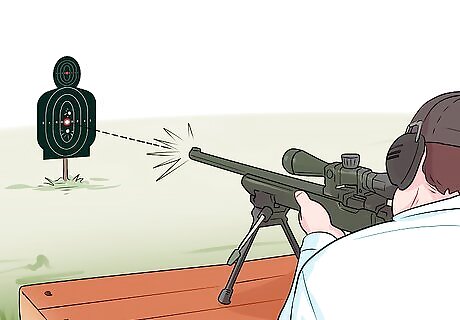
Shoot again. Continue the 3-shot process, adjusting the scope as necessary, until you have centered the shots on the target. Allow your gun to cool between shooting groups of shots. You should be able to hold the barrel for 10 seconds without burning yourself before firing again. If the barrel gets too hot, it can warp and lead to misfires and bad accuracy.
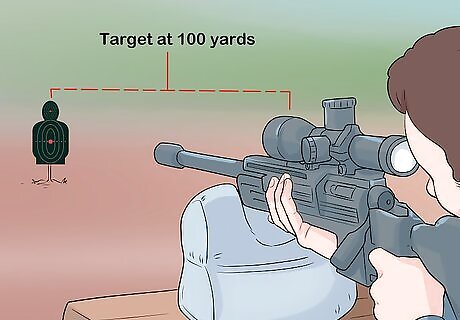
Place the target at 100 yards (91.4 m). Repeat the 3-shot process until you have centered the shots on the target again. Once you've centered your shots, you have successfully sighted-in the rifle.
Quickly Sighting With Two-Shot Method
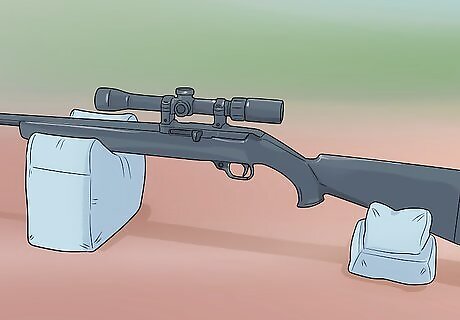
Set up your rifle. You will need to make sure that your rifle is completely immobile during the sighting process. You will need to be able to make adjustments to the sight without moving the rifle. This method will sight your rifle about 3–4 inches (7.6–10.2 cm) above the target at 100 yards (91.4 m). This is a standard height for longer-distance shooting. At 200 and 300 yards, the bullet will drop towards the center of the target. This method will not result in pin-point accuracy, but will be sufficient for deer-sized targets. You can bore-sight before performing this method for increased accuracy and ease of sighting.
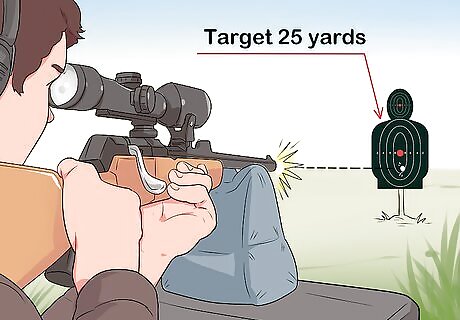
Place a target 25 yards (22.9 m) away. Load a round into the rifle and place the center of the target in the center of the crosshairs. Fire a single shot without moving the rifle. Squeeze with even pressure and continue squeezing after the shot is fired to prevent the gun from jumping. Always follow strict safety guidelines when handling a live firearm. Never shoot when someone is downrange, and never point a loaded gun at another person.
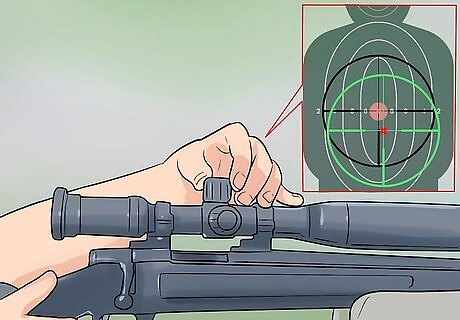
Adjust the scope. It is essential that the gun does not move during this process or the adjustments will be incorrect. Using the knobs on the scope, adjust it so that the crosshairs are directly over the bullet hole created by your first shot. Most scopes move the crosshair in the opposite direction of the knob. For example, to move the crosshair down, you would twist the knob up. You can make the bullet hole easier to see by placing a brightly-colored sticker over the hole on the target.
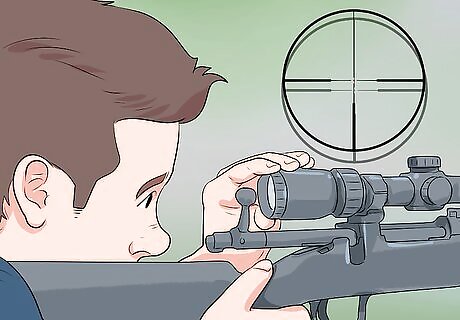
Lower the crosshair slightly. Once the crosshair is lined up directly on the bullet hole, lower the crosshair so that it is pointing at a spot about half an inch below the bullet hole. This will make your gun shoot about 0.5 inches (1.3 cm) above the target at 25 yards (22.9 m). Being 0.5 inches (1.3 cm) above the target at 25 yards (22.9 m) generally translates to 3–4 inches (7.6–10.2 cm) above at 100 yards (91.4 m), dead-on at 200 yards (182.9 m), and 8–12 inches (20.3–30.5 cm) below the target at 300 yards (274.3 m). This will vary based on the caliber, but is generally similar.
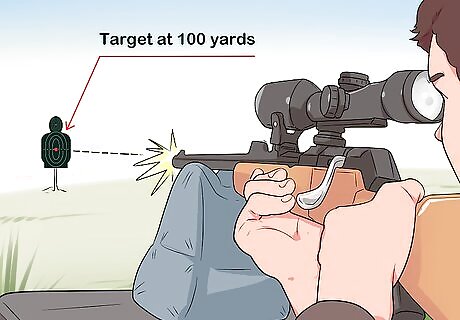
Move the target to 100 yards (91.4 m). Sight the rifle in the dead center of the bull's-eye and carefully take the shot. Your bullet hole should be between 3–4 inches (7.6–10.2 cm) above the bull's-eye. At this point, the rifle is sighted Avoid shooting during winds to keep your bullet from drifting left or right.



















Comments
0 comment